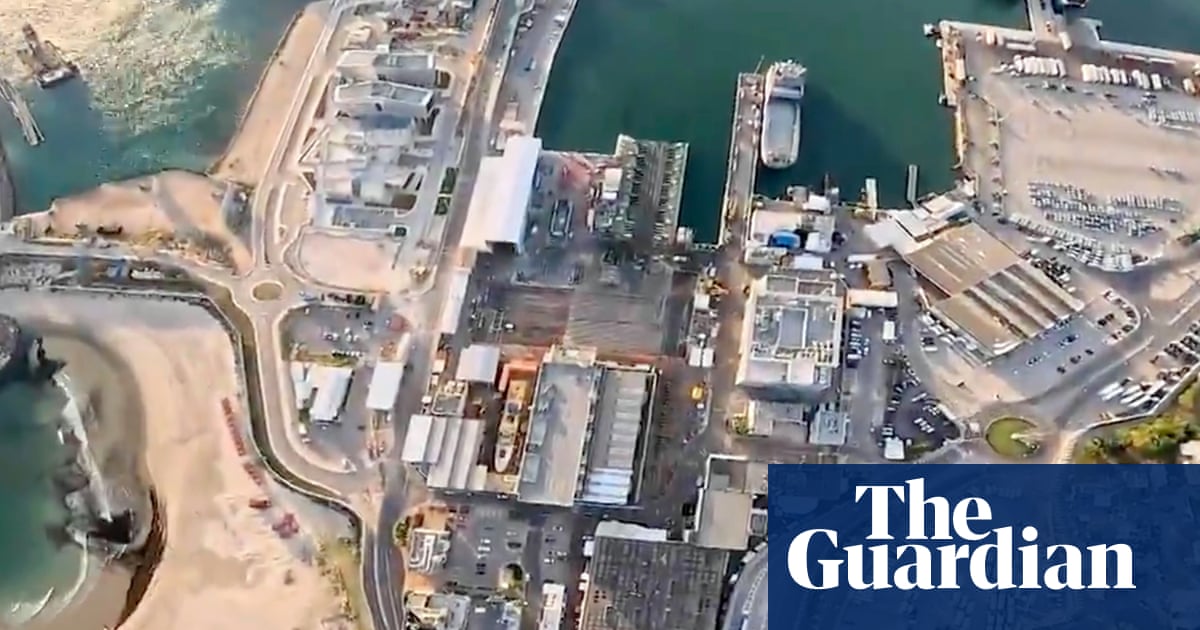The Israeli foreign minister, Israel Katz, has said a decision on an all-out war with Hezbollah was coming soon, as Israel generals announced late on Tuesday that they had signed off planning for an offensive into Lebanon.
The escalating rhetoric came after the release of video footage from a Hezbollah surveillance drone’s overflight of the northern city of Haifa, which included images of sensitive sites and civilian neighbourhoods.
The broadcast of the footage was widely interpreted as a thinly veiled threat against Haifa and comes as cross-border exchanges continue between the two sides. Last week northern Israel was hit by the heaviest Hezbollah barrage of the war after the Israeli killing of a senior Hezbollah commander.
After threats by the Hezbollah chief, Sayyed Hassan Nasrallah, to damage Haifa’s ports that are operated by Chinese and Indian companies, Katz said in a post on X: “We are getting very close to the moment of deciding on changing the rules of the game against Hezbollah and Lebanon.”
“In an all-out war, Hezbollah will be destroyed and Lebanon will be severely beaten,” he added.
Israel’s military later said “operational plans for an offensive in Lebanon were approved and validated, and decisions were taken on the continuation of increasing the readiness of troops in the field”.
Katz’s comments came as the IDF said on Tuesday that it had approved Lebanon battle plans. The IDF said the generals held an assessment, during which “operational plans for an offensive in Lebanon were approved” including “accelerating the readiness of the forces on the ground”.
The warnings came hours after Hezbollah published nine minutes of drone footage gathered from its surveillance overflight of locations in Israel, including the ports and airports of the key northern city of Haifa.
Distribution of the footage was flagged up by the Lebanese armed movement, including on its Telegram channel, advising viewers on several channels to “watch and analyse” what it said were “important scenes”.
Hezbollah has sent surveillance and attack drones into Israel in the past eight months as it exchanges fire with the Israeli military in parallel to the Gaza war.
The decision to broadcast the footage, which had images of residential and military sites in and around Haifa, including port facilities, appeared aimed as much at an Israeli audience as at a wider international one.
Sayyed Hassan Nasrallah said in November that it had been sending surveillance drones over Haifa.
The footage appeared to show parts of a factory belonging to Rafael defence – including Iron Dome batteries, rocket engine depots, David’s Slingshot facilities and radar.
The latest exchange of threats between the two sides came as the US and France work on a negotiated settlement to the hostilities along Lebanon’s southern boundary with Israel.
The footage appeared to underline the mounting difficulties Israel has encountered in dealing with the drone threat from Hezbollah, including several incidents when incoming drones were not detected by Israeli air defence systems, including a recent attack on a group of Israeli troops that killed one person.
Experts have assessed that Hezbollah is using a combination of tactics to avoid its drones being detected, including flying low and using multiple channels to avoid jamming technology.
Although about 150 drones have been intercepted, others have got through to their targets, and Israeli officials have disclosed they have begun spending millions of shekels to counter the drone threat.
Among reported planned improvements to Israel’s air defence systems are upgrades to the Iron Dome system to make it better equipped to deal with slower-flying uncrewed aircraft and the reintroduction of retired conventional anti-aircraft weapons, including the Vulcan system.
The disclosure of the footage appeared to be timed to coincide with the visit of the US envoy Amos Hochstein to Lebanon after meeting senior Israeli officials, including the prime minister, Benjamin Netanyahu, the day before.
In Beirut, Hochstein called for the “urgent” de-escalation of cross-border exchanges of fire between Hezbollah and Israeli forces raging since the start of the Gaza war.
“The conflict … between Israel and Hezbollah has gone on for long enough,” the presidential envoy said. “It’s in everyone’s interest to resolve it quickly and diplomatically – that is both achievable and it is urgent.”
Despite Hochstein’s visit to the region, there appeared to be little evidence of a breakthrough in efforts to reduce tension on the boundary between Israel and Lebanon. Reports in Israel have suggested Hochstein did not see any prospect for significant movement while the war in Gaza was continuing.
After several days of relative quiet between Israel and Hezbollah over the weekend, after last week’s barrages which included the heaviest of the war, there was a rise in hostilities again on Tuesday.
State media in Lebanon reported an Israeli drone strike on a car on the highway north of the coastal city of Tyre. It was not immediately clear who was in the car or how many people were killed or injured.
Last week Hezbollah launched hundreds of drones and rockets, including more than 200 on a single day, and the Israeli military struck Hezbollah targets in return.

